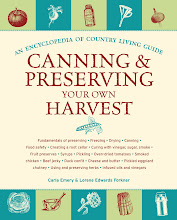Early last summer, my uncle started a new project: raising chickens. Against the idyllic backdrop of his Maine farmhouse and with his childhood farming experience in mind, the endeavor of this now suburbanite man and his family seems less out of the ordinary, but it was none-the-less an exciting learning experience for all involved.
That July as I gazed down at the 100 plus yellow, brown, and red chicks rustling about and pig-piling their fluffy selves into cotton-ball-like nests, the furthest thing from my mind was the reality of where their final resting place would be. However, accepting that your chicks are destined to land on your dinner plate, providing you with many a delicious meal throughout the year, is a crucial part of poultry planning prep. Just how many chicks will you need? What chickens are best for broiling? And can you save on bargain breeds?
If you're starting out by buying chicks (my uncle mail-ordered his) here are some helpful tips from Carla Emery on how many and which types to buy for your family.
Chicks for Meat How many days a year do you want to eat chicken? Once a week? Order 50 quick-growing birds to be raised and processed for the freezer as soon as they reach the target weight. Twice a week? Make that 100 of them. Or, if you're not used to thinking of it by the bird or have a small family, 15 chickens per year per member of your family is a conservative estimate. Remember to include the cockerels from your laying stock (if you're getting straight run) in your count. Lane Morgan ... : "A 10-12-week-old Cornish cross is big. Our family of 4 gets at least 2 meals out of it, which affects menu planning and butchering quotas."
If your interest is to get birds for roasting and frying, the broiler breeds are a shortcut to that end. Or try a straight run of a heavy breed. You may get offered a great bargain in cockerels (generally Leghorns). Don't jump at it unless you have lots of virtually free food to give them.
It might be called something like "Super Bargains" or "Assorted Surplus." It takes so many more pounds of feed to grow a Leghorn to eating size than it does a broiler breed that the money you save on Leghorn cockerels at the outset is more than offset by the extra feeding expense. Such lightbreed cockerels, if not bought by the uninformed, will end up in dog food or livestock food or ground up for fertilizer.








No comments:
Post a Comment